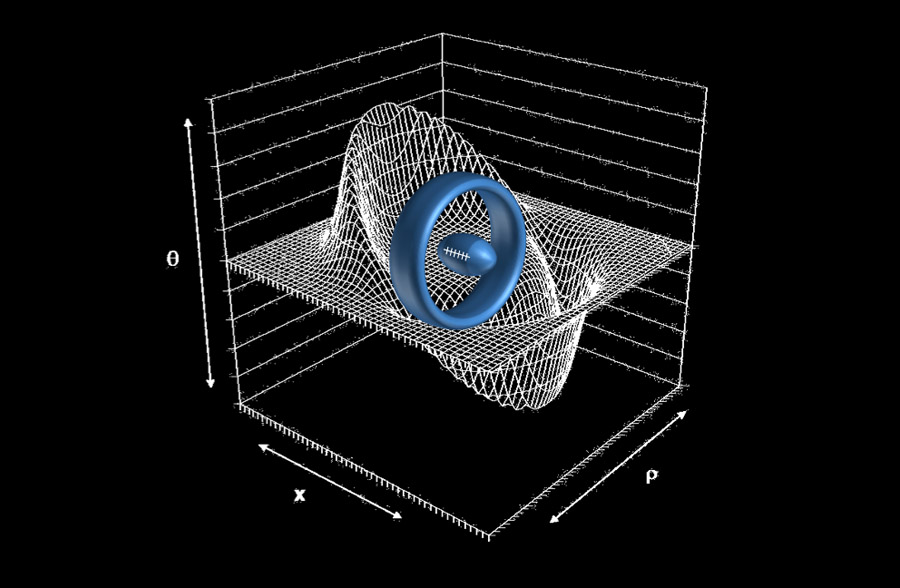Warp drive may be more feasible than thought, scientists say
September 18, 2012

A ring-shaped warp drive device could transport a football-shape starship (center) to effective speeds 10 times faster than light (credit: Harold White)
A warp drive to achieve faster-than-light travel — a concept popularized in television’s Star Trek — may not be as unrealistic as once thought, according to scientists at the 100 Year Starship Symposium, Space.com reports.
A warp drive would manipulate space-time itself to move a starship, taking advantage of a loophole in the laws of physics that prevent anything from moving faster than light.
A concept for a real-life warp drive was suggested in 1994 by Mexican physicist Miguel Alcubierre; however, subsequent calculations found that such a device would require prohibitive amounts of energy.
Now physicists say that adjustments can be made to the proposed warp drive that would enable it to run on significantly less energy, potentially bringing the idea back from the realm of science fiction into science, according to Harold “Sonny” White of NASA’s Johnson Space Center.
Warping space-time
An Alcubierre warp drive would involve a football-shape spacecraft attached to a large ring encircling it. This ring, potentially made of exotic matter, would cause space-time to warp around the starship, creating a region of contracted space in front of it and expanded space behind.
Meanwhile, the starship itself would stay inside a bubble of flat space-time that wasn’t being warped at all.
With this concept, the spacecraft would be able to achieve an effective speed of about 10 times the speed of light, all without breaking the cosmic speed limit.
The only problem is, previous studies estimated the warp drive would require a minimum amount of energy about equal to the mass-energy of the planet Jupiter.
But recently White calculated what would happen if the shape of the ring encircling the spacecraft was adjusted into more of a rounded donut, as opposed to a flat ring. He found in that case, the warp drive could be powered by a mass-energy equivalent to that of a spacecraft like the Voyager 1 probe NASA launched in 1977.